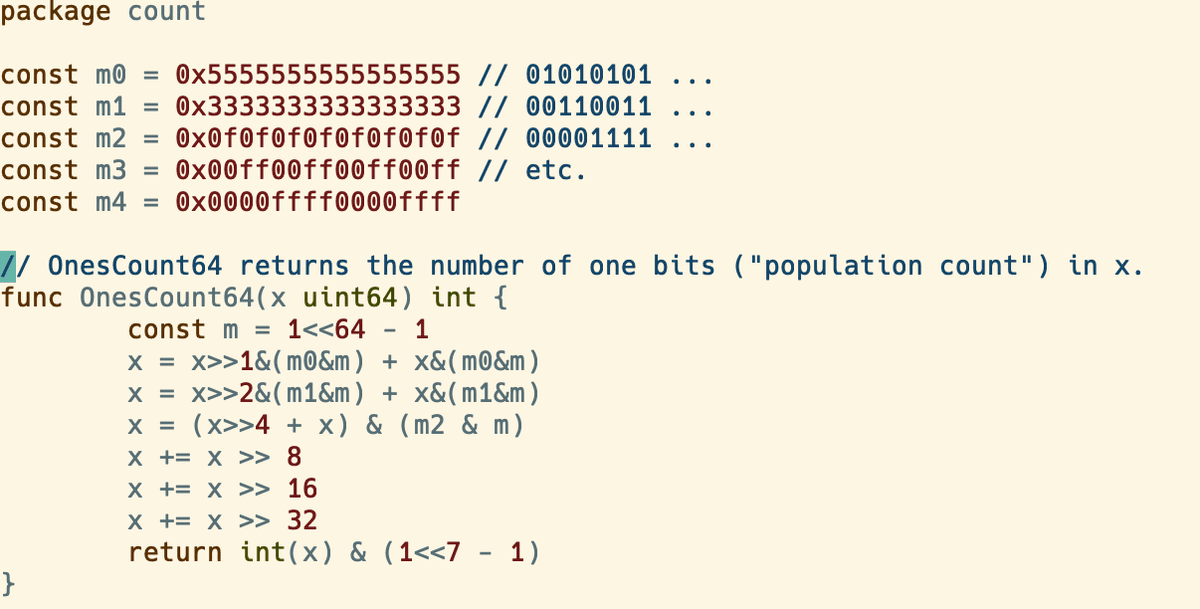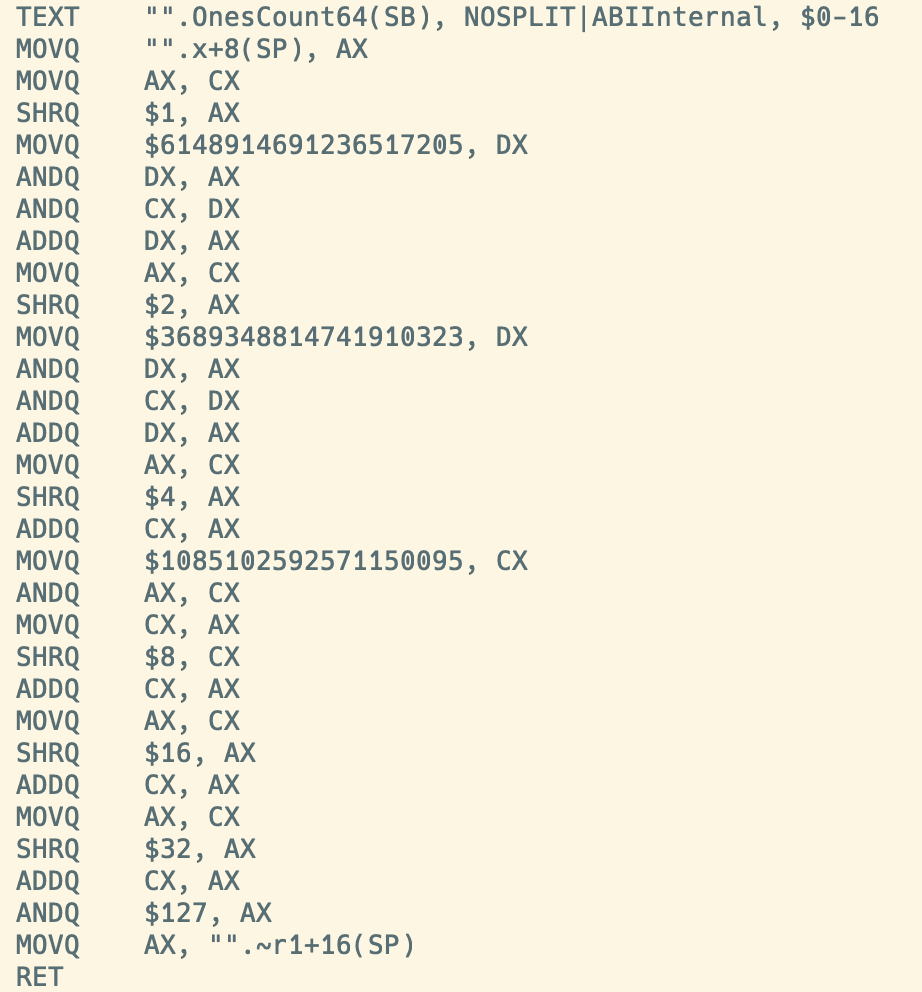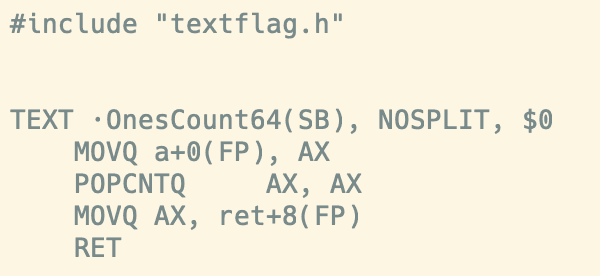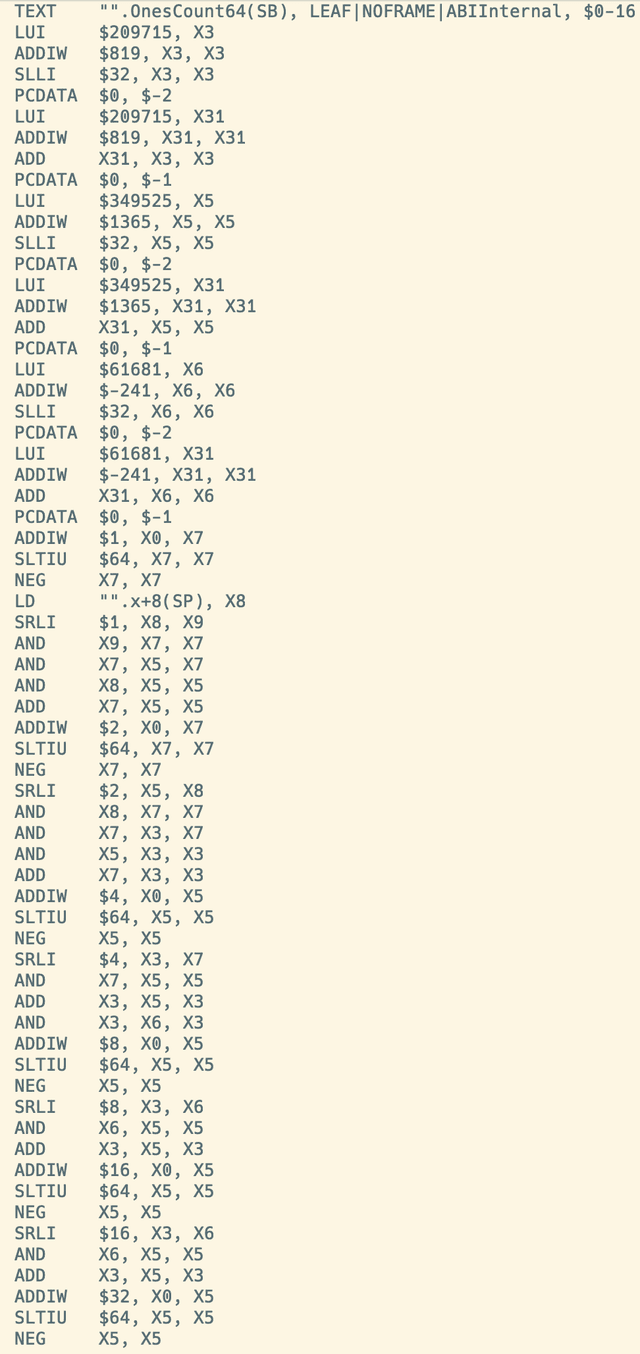1 The Little
Interactive Proof, aka Interactive Game, have become the de facto standard for the arbitration mechanisms of Optimistic Rollups. By providing a unified deterministic single-step execution environment for both on-chain and off-chain through the use of intermediary instructions, it minimizes resource requirements during on-chain arbitration. Its inherent complexity leads us to simplify its explanation for the sake of dissemination and comprehension. Let us delve into just how simple it can be1.
1.1 One Language, One Result
Moe: Is Uno mas uno es igual a dos also true on your computer?
Joe: I don't understand Spanish, what did you mean? Could you describe it in mathematical language that everyone could comprehend?
Moe: Is 1 + 1 = 2 also true on your computer?
Joe: Yes!
Moe: Is 1 + 1 = 2 also true on everyone's computer?
Everyone: Yes!
Moe: Is (((1 + 1) + 1) + 1) = 4 also true on everyone's computer?
Everyone: Yes!
1.2 One Language, Two Result, One Step
Moe: Is (((1 + 1) + 1) + 1) = 5 also true on your computer?
Joe: No! It's 4.
Moe: I am inclined to assert the correctness of 5. Shall we entreat the esteemed scholar, Lorentz2, to adjudicate the veracity of our claims?
Joe: Good. However, as Mr. Lorentz is rather preoccupied, we could initially examine the first inconsistent step and delegate their validation to him.
Moe: Could this work?
Joe: Yes. Every step is deterministic.
Moe: Let's start with first evaluation!
Joe: Okay!
...
Moe & Joe: In step 2, we have different result. Moe is 2 + 1 = 4, Joe is
2 +1 = 3. Let's seek his help!
Lorentz: 2 + 1 = 3
Moe & Joe: Thank you!
1.3 One Language, Two Result, One Step, LogN Comparison
Moe: Is (((1 + 1) + 1) + ... + 1) = 48784359345934 also true on
your computer?
Joe: No. The Value is 48784359345935.
Moe: Let's play the game again!
Joe: No way! Due to the communication overhead, each comparison requires 1 second. We may need 1.5 million years to finish the game.
Moe: The cost of computation is just 1 second. Emmmm, how about using bisection?
Joe: Each comparison can resolve half of the issues. In this manner, we can swiftly identify inconsistencies!
Moe: Step 24392179672966 is 24392179672966 + 1 = 24392179672967
Joe: Step 24392179672966 is 24392179672965 + 1 = 24392179672966
Moe: Step 12196089836483 is 12196089836483 + 1 = 12196089836484
Joe: Step 12196089836483 is 12196089836482 + 1 = 12196089836483
Moe: Step 6098044918241 is 6098044918241 + 1 = 6098044918242
Joe: Step 6098044918241 is 6098044918241 + 1 = 6098044918242. The
first inconsistent step must be in (6098044918241, 12196089836483],
we're not far from our destination!
2 The Seasoned
In 'The Little' we have identified the three essential elements that constitute the 'Interactive Game':
a. One Language
b. Deterministic Step
c. Bisection
One cannot help but wonder how such a simple protocol led numerous Optimistic Rollups teams to spend so much time and energy on it? This is akin to the time before the Wright brothers invented the airplane when people already knew that the quickest way from point A to point B was not traveling over mountains and valleys, but flying in a straight line. The act of flying, like Bisection, is straightforward and simple. To attract those who used to drive to fly instead, it's sufficient to emphasize this point. However, for an aircraft engineer, it is evident that there is much more to know.
2.1 One Language
Moe: We require a language that supports the operation of blockchain clients and yields results consistent with the client on the chain.
Joe: Done! For Ethereum, it's Solidity!
Moe: How do you intend to handle these instructions that depend on spacetime? Such as: CALLER, SLOAD, SSTORE, BLOCKTIME.
Joe: Emmm... I can't tell you right now, but there is always a way, isn't there?
Moe: Optimism has tried that but failed.
Joe: Sad story. Thanks for their contribution.
Moe: We could emulate the execution container of a language. How about EVM-in-EVM?
Joe: Sounds not bad. But how about the cost of Gas? I don't think it's an easy job to emulate memory and storage in Solidity.
Moe: We need a medium, just like we've done with mathematical language.
Joe: I think we're closer to the answer.
Moe: Client could be compiled to this language. And we could emulate this language on chain.
Joe: Ideally, it should be an assembly language, as emulating the execution of instructions is always simpler.
2.2 Deterministic Step
Moe: By utilizing a certain language, we can roughly achieve certainty in computation. Thus, the problem to be addressed now is the certainty of input and state changes.
Joe: Generally speaking, we employ an Oracle to resolve issues related to external information input.
Moe: Could this Oracle be deterministic for both of L1 and L2?
Joe: We have root on L1, which means we have chance to verify input.
Moe: Is it possible to illustrate our current achievements with a figure?
Joe: Sure!

Moe: Could you explain this figure more?
Joe:
Pre-execution: fetch input by
block_hash
Load Emulator: setup execution environment
Verify Input: verify input with witness
Transition: execute L2 tx
Moe: Sounds we've already had everything!
Joe: Almost.
2.3 Bisection
Moe: As the most straightforward segment, there appears to be little worth discussing.
Joe: We need to ascertain the validity of the witness.
Moe: Signature is not enough?
Joe: No. Some may choose to feign deafness and muteness.
Moe: Okay. L1 should verify witness in each bisection round.
Joe: Yes. And L1 could not only have inconsistent STEPi, also have last consistent STEPi-1 after bisection.
3 The Ugly
In 'The Seasoned', we have refined the three essential elements that constitute the 'Interactive Game':
a. One Language: simple assembly which could be run in off-chain client and be emulated on chain.
b. Deterministic Step: verify input with witness.
c. Bisection: verify witness in each round.
Until now, the Interactive Game has been endearing and intricate. However, to make it truly functional, we must unveil its ugly side.
3.1 One Language: RISC
Moe: It appears we have a plethora of choices, such as MIPS, RISC-V, and even Wasm.
Joe: We can design a flexible architecture to support various languages. However, only one can be utilized at any given moment.
Moe: Which one would be your preferred choice?
Joe: MIPS. But in two years it will be RISC-V.
Moe: Your unpredictability leaves me perplexed.
Joe: I'm a reasonable man, and I am about to elucidate my rationale to you. Firstly, the abstraction level of emulating CPU instructions is quite low. While it may appear abstruse, it actually entails a lesser cognitive load due to the absence of multiple layers of abstraction, hence my lack of enthusiasm for Wasm.
Moe: That seems reasonably sound.
Joe: Among CPU instruction sets, RISC instruction sets are undoubtedly a superior choice, owing to their limited and stable number of instructions, and the evasion of the complexity of emulating intricate instructions. In particular, the load-store architecture precludes the emergence of memory side effects within ALU operations. It is essential to note that every step of memory state change in our emulator requires tracking, and thus the hardship of implementing register-memory architecture may merely result in an infinity of bugs. Considering the maturity and stability of compilers, I lean towards MIPS.
Moe: Tell me more about RISC-V.
Joe: We could have a 64-bit address space, as the 4GB memory space provided by MIPS 32-bit can sometimes prove inadequate. However, regardless of the instruction set used, we must take care to verify the correctness of the implementation.
Moe: How will system calls be implemented? Indeed, it could pose a formidable issue.
Joe: However, we can cleverly construct our program to minimize the use of system calls, deploying our own system call implementations to replace generic ones. Our primary demand is to maintain consistency in state changes on and off the chain, rather than to create a universal emulator.
Moe: When I mention system calls, I am actually referring to the non-deterministic factors in the language. System calls represent a form of interaction between the emulator and the outside world, and such interaction could imply non-determinism. You mentioned the method of minimizing and customizing system calls, which, while not specific, is indeed feasible considering that all aspects of the emulator lie in the hands of the implementer. However, I remain apprehensive, feeling that there are many non-deterministic factors that I have not yet considered.
Joe: I perceive your concerns, and you have even begun contemplating issues of the next phase. Let us first postulate that we already possess such a medium and continue this discussion in the following section.
Moe: The intermediary representation appears to be impartial towards all chains, which sounds immensely promising.
Joe: Indeed. We can implement its emulator on various chains, thus enabling various chains to have an Interactive Game. I've heard of a project that's doing just that.
Moe: Rooch/flexEmu (opens in a new tab)
Joe: Exactly it!
3.2 Deterministic Step: Procedure, Input
Moe: Let's proceed swiftly, as the earlier segment regarding language has not yet been fully discussed.
Joe: Indeed, we need to delve deeper into the determinacy of language.
Moe: When we discuss the determinacy of assembly language, we are in fact addressing the determinacy of instructions.
Joe: Instruction is composed of opcode and operand. These are the two primary sources of determinacy issues: the micro-level manifestations of procedure and input at the level of instructions. We have briefly discussed input in 'The Seasoned' and will delve into a detailed analysis shortly. First, we need to ensure the uniqueness of instruction side effects.
Moe: Concurrency will be a serious issue.
Joe: Yes. The output (state root) produced by emulator must be as same as the one calculated by parallel executor in production environment.
Moe: How do we ensure the determinacy of concurrent execution in every step?
Joe: Dr.Strange3 could help us.
Moe: Are you serious?
Joe: No, I'm Joe. We can't do that, and our purpose is not to build such a system. What we want is to get the same final state and maintain the same step state among emulators.
Moe: Oh, yes. It's not a hard job to achieve the same final state. We just need...
Joe: Sequencer should give each tx an order number. Tx that are causally unrelated can be executed in parallel, while those that are causally related must be executed strictly in sequence. In this manner, the final state will be consistent with a global sequential execution.
Moe: Now, we can confidently eliminate the impact of concurrency on the side effects of instructions.
Joe: In addition to concurrent transactions, there are many units of concurrent execution in the process.
Moe: The easiest way to do this is to force the emulator to execute on a single thread.
Joe: Yes.
Moe: Randomness is another factor of instability.
Joe: Let's start analysing the world of instructions from the bottom up.
Moe: There is no opcode supporting random operation directly in RISC family. For related system calls, we can embed a fixed random data source within the emulator. This way, each emulator can achieve consistent pseudorandom numbers in the same procedure.
Joe: Nothing wrong with.
Moe: Linux Kernel hates float. Does emulator hate that too?
Joe: We could use SoftFloat library or just forbidden it.
Moe: Sounds like we've prepared everything for deterministic procedure.
Joe: Not enough yet. Do not forget that procedures cannot prove their own innocence.
Moe: L1 can validate static procedures, requiring only a digest. Prior to the commencement of the Interactive Game, the L1 contract will verify whether a consistent procedure has been used by the two parties through the validation of their memory states.
Joe: Indeed. This is akin to a verifiable boot process. The memory address of the boot sector is fixed, and both parties only need to provide a simple merkle tree proof.
Moe: You just mentioned that there are additional points to be made regarding the issue with input.
Joe: Indeed. I would like to reiterate the importance of the verifiable 'verification of the input process'. The off-chain verification process for input must be traceable in single step, so that the initial state of the input can be legitimized. As part of the memory state, if the input data loaded is deliberately tampered with, it will lead to the inability to provide a proof of the state tree, as tampering implies that the preceding instructions have produced side effects. However, in the case of consistent initial states, malicious nodes cannot provide side effect instructions to prove their innocence.
Moe: It does sound a bit convoluted, but I comprehend your meaning. The crux is to ensure the determinacy of the input, and combined with the determinacy of the procedure, we can only have deterministic single-step states. It seems impregnable.
Joe: We also have the issue of 'Unconscious Evil', a problem that is easily overlooked.
Moe: As your counterpart, I understand your point. Achieving determinacy means we are implementing pure rationality that relies on a physical medium. Possessing pure rationality alone should not lead to complacency, causing us to overlook the physical constraints.
Joe: Exactly. Blockchain networks are resilient to silent errors, as nodes provide ample redundancy in the verification process. However, the simple blockchain itself does not possess this property. In the asynchronous validation of L2, silent errors can result in honest but erroneous nodes being penalized.
Moe: The occurrence of silent errors is as inevitable as the sun rising in the east and setting in the west. Therefore, we need to proactively create redundancy. For instance, we can utilize physical machines with different architectures to collectively compute the same process, and use the aggregated results as the output of the current node. Cloud service providers are already well-versed in similar tasks.
Joe: Now we can say we have deterministic step.
3.3 Bisection: First-Class Ticket
Moe: Bisection is the most discussed topic as it is a direct challenge in the interactive game. However, it now seems to be a foregone conclusion.
Joe: It is a direct issue as it directly exhibits the interactive behaviors, yet the answer is indirect. It relies on an appropriate intermediary language medium and the implementation of deterministic language execution.
Moe: This reminds me of the previous analogy about airplanes. Now we have the airplane, we just need to purchase the tickets.
Joe: Give me a first-class ticket, thank you!
APPENDIX A: What Emulator Emulates When It Emulates
Joe: Let me start this time.
Moe: Go ahead.
Moe: Observe what instructions this source code will morph into on your machine:

Joe: You've preemptively spoken again. On my x86_64:

Or:

Moe: Because I showed you source code. Talking is cheap. On my RISC-V:

Joe: In the face of identical inputs, despite the vast differences in the instructions our machines execute, they still manage to yield identical outputs.
Moe: Is it you who is mirroring me, or am I the one replicating you?
Joe: That is the question.
Footnotes
-
Prerequisite knowledge: Understand the basic concepts of optimistic rollups, and the fundamental components of L1 and L2. ↩
-
A scientist with a narrative intertwined with Ether. ↩
-
Doctor Stephen Strange is a character who can control time-space appearing in American comic books published by Marvel Comics. ↩